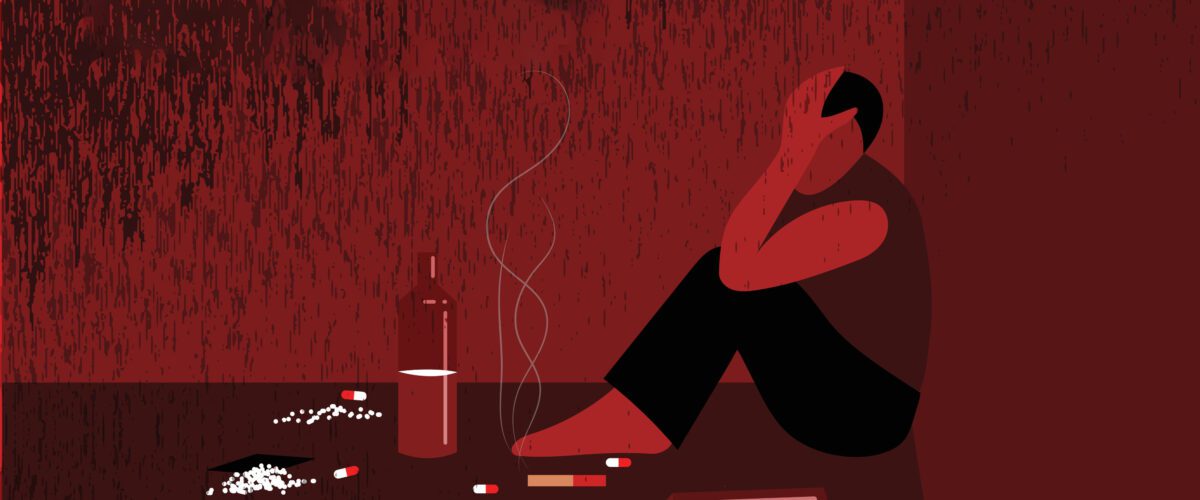
Vaishnavi Prasad
On 6th April 2021, the Supreme Court, in Gurdev Singh v. State of Punjab [“Gurdev Singh”] dismissed a criminal appeal on the question of quantum of sentence in a case under Section 21 of the Narcotic Drugs and Psychotropic Substances Act, 1985 [“NDPS”]. While considering submissions advanced on the mitigating and aggravating circumstances present, the Court made the following significant observations:
“…[w]hile awarding the sentence/punishment in case of NDPS Act, the interest of the society as a whole is also required to be taken in consideration. Therefore, while striking balance between the mitigating and aggravating circumstances, public interest, impact on the society as a whole will always be tilt in favour of the suitable higher punishment. Therefore, merely because the accused is a poor man and/or a carrier and/or is a sole bread earner cannot be such mitigating circumstances in favour of the accused while awarding the sentence/punishment in the case of NDPS Act. Even otherwise, in the present case, the Special Court, as observed hereinabove has taken into consideration the submission on behalf of the accused that he is a poor person; that he is sole bread earner, that it is his first offence, while not imposing the maximum punishment of 20 years R.I and imposing the punishment of 15 years R.I. only.” [emphasis mine]
This judgement marks a shift in the judicial interpretation of Section 32-B of the NDPS, and arguably, for the worse. By generally attributing aggravating circumstances greater value during sentencing in NDPS cases, and not acknowledging the link between poverty and drug crimes, Gurdev Singh neglects the importance of mitigating circumstances in NDPS cases, and thereby allows for imposition of sentences disproportionate to culpability. The Supreme Court’s decision is likely to lead to increased incarceration of impoverished individuals driven to drug offences by need.
The Statement of Objects and Reasons of the NDPS Amendment Act of 2001 expands on the differing approaches towards drug traffickers and addicts: the Act envisages severe punishments to the former, and a reformative approach to the latter. To that end, Section 32-B of the NDPS is a limited attempt to rationalize the sentencing structure. This Section stipulates that a Court is justified in imposing a punishment higher than the minimum term of imprisonment within the NDPS only if certain factors, such as those specified in the provision, are met. Factors like use of violence of arms by the offender or if the offence is committed in an educational institution, are deemed as aggravating circumstances that allow the Court to increase the sentence from the minimum amount of imprisonment prescribed. Courts are allowed a certain amount of discretion in determining what these aggravating factors are. However, any aggravating factors other than those enumerated in Section 32B (a) to (f) are subject to scrutiny by higher Courts.
The phrasing of the Section indicates that the default sentence to be imposed by Courts is the minimum sentence stipulated for offences under the NDPS Act. They are expected to justify the imposition of any additional sentence with relevant aggravating factors. While the Act does not provide for mitigating circumstances that could be taken into consideration when determining the final sentence, broad guidelines could be derived from judicial decisions over the past decade.
Contextualizing Aggravating and Mitigating circumstances
The earliest reference to aggravating and mitigating circumstances in sentencing jurisprudence was in Jagmohan v. State of UP. The Supreme Court referenced Ratanlal’s Law of Crimes in the context of the discretion vested in judges in sentencing where they may consider the aggravating and mitigating circumstances of the case. The concept of aggravating and mitigating circumstances is most renowned in reference to death penalty jurisprudence. The Supreme Court delved into this concept in Bachan Singh v. State of Punjab where they laid down broad guidelines to make the imposition of the death penalty less arbitrary. However, the framework of aggravating and mitigating circumstances in determining quantum of sentence remains applicable outside of capital punishment cases as well.
Section 32-B of the NDPS provides certain conditions where the court may impose a sentence higher than the minimum sentence – that is, it provides certain aggravating circumstances. However, the judicial interpretation of this provision has not only postulated additional aggravating circumstances, but has also gone beyond the text of the statute to lay down certain mitigating circumstances. The latter is necessary to paint a more holistic image of the circumstances surrounding the accused in the interest of just punishment, especially in light of the fact that the minimum sentence is not considered to be the default as it should be.
The scope of aggravating and mitigating circumstances under Section 32-B
The Section lays down six aggravating factors that justify increased sentence: One, use or threat of use of violence by the offender; two, the offender taking advantage of a public office when they committed the offence; three, the offender either utilizing or affecting minors; four, if the offence is committed within or in the vicinity of an educational institution, a social service facility or the like; five, if the offender is a member of a criminal group; and six, the offender’s involvement in other illegal activities facilitated by the commission of the offence. In addition to this, the Supreme Court in Rafiq Qureshi v. Narcotic Control Bureau, a case relied on by the accused in Gurdev Singh, held that the quantity of the substance with which the accused is charged is a relevant aggravating factor. While there is no definite quantitative standard laid down by the Courts, the amount possessed by the accused is normally contrasted with the ‘commercial quantity’ (which is a quantity specified by the Central Government by notification in the Official Gazette), and weighed alongside any mitigating circumstances.
Section 32-B itself specifies that the Court, in addition to the aggravating factors mentioned in the provision itself, may take into account any factors ‘as it may deem fit’ to impose a punishment higher than the minimum term of imprisonment. A literal interpretation of the provision allows for the Court to consider aggravating factors beyond what has been provided in the provision. While mitigating circumstances are not explicitly provided for here, Courts have a duty to provide due weightage to the mitigating and aggravating circumstances placed before them.
Mitigating circumstances to reduce the sentence meted out to the accused exist to provide context about the offender and to ensure that the punishment meted out is just. Some of these mitigating circumstances are – the absence of a prior criminal record, poverty and unemployment, deprivation of an accused’s family of a source of income, and if the accused is merely a carrier.
Questionable precedent by Gurdev Singh v. State of Punjab
Gurdev Singh was deep in penury and happened to be the sole breadwinner of his family. Presumably, his circumstances led to his first offence: possession of 1 kg heroin. He was tried and was convicted by the Trial Court, and his sentence was confirmed by the High Court.
In Gurdev Singh, the Supreme Court acknowledged the extenuating circumstances surrounding the accused: his poverty, absence of criminal record and that he is merely a carrier in the transaction. However, the Supreme Court tilted in favour of the aggravating factor of the quantity of the contraband in possession of the accused being four times greater than the minimum quantity. The Supreme Court makes an ostentatious slippery slope argument of societal interest trumping individual rights to justify valuing the quantity of the contraband over the four mitigating factors. This line of thinking has been used in the past to justify draconian measures such as preventive detention and extra-judicial killings that sideline due process and the rights of the accused. This reasoning was sought to be aided by a slightly exaggerated analogy between a murderer taking the lives of their victims and individuals who deal drugs that are “instruments in causing death or in inflicting death blow to a number of innocent young victims who are vulnerable.” Trafficking drugs and murder are offences that have vastly different consequences.The latter leads to the immediate loss of a human life, whereas the former may lead to or exacerbate addiction, andhas deleterious but not irreversible consequences. They are not comparable, and any comparison is unreasonable in the context of arguing for increased punishment fordrug offences.
Consequently, the Supreme Court deviated from a decade of jurisprudence relating to Section 32-B by holding that ‘mere’ poverty, the accused being a sole breadwinner and only acarrier “cannot be such mitigating circumstances in favour of the accused.” Individuals living in acute poverty often do not have access to proper education, healthcare, food and sanitation. Cultivating and trafficking drugs are some of the only accessible and viable economic prospects for these individuals. Increased criminalization and stringent punishment for narcotics related offences without examining the socio-economic context surrounding the offenders would criminalize poverty and punish individuals for acts they had little choice participating in.
It is important to further scrutinize the full impact of the observations made by the Supreme Court excerpted in the beginning of this post.
The Supreme Court stated two things there: one, the accused being poor, a sole bread winner and a carrier cannot be mitigating circumstances in favour of the accused; and two, merely quantity as an aggravating factor outweighs the aforementioned mitigating factors. Both are problematic.
First, as discussed earlier, there is a clear link between poverty and drug crime in that individuals from a poor economic background are more vulnerable to be forced into trafficking drugs and/or addiction. It is unreasonable for the Supreme Court to disregard these very valid mitigating circumstances as it amounts to punishing individuals for actions that may not be entirely in their control. Second, even when these mitigating circumstances were considered, it is not reasonable to ascribe so much weight to quantity as an aggravating factor such that without the mitigating factors, the accused would have been sentenced a maximum punishment of 20 years.
The NDPS Act, 1985 creates three categories: small quantity, greater than small quantity and less than commercial quantity, and commercial quantity, each of which warrant an increased punishment than the former. By virtue of carrying a commercial quantity, these individuals already face a higher minimum sentence than the other brackets. Section 32-B prescribes the minimum punishment as a default and any increased punishment would require justification in the form of the relevant aggravating factors. Quantity carried is one such aggravating factor.
In this case, the accused was carrying 4 times the commercial quantity, and the Supreme Court seems to indicate that the increased quantity alone, in the absence of consideration of mitigating circumstances, would have warranted the maximum sentence; and that the sentence of 15 years R.I. instead of 20 years R.I., therefore, reflects a consideration of the mitigating circumstances
However, attributing this much weight to increased quantity alone is arbitrary because it does not account for the harm caused by other aggravating factors or their absence. For instance, an accused who is carrying 4 times the commercial quantity, and an accused who is carrying 4 times the commercial quantity, but in doing so caused grievous injury to someone, will both face the same maximum punishment, despite the latter causing more harm than the former. In the absence of clear sentencing guidelines, imposing the maximum punishment will always lead to inconsistent sentencing.
Further, in the present matter, the several mitigating factors such as poverty, lack of criminal antecedent, the accused being a sole breadwinner, and the accused being a carrier provide a far more compelling case for a considerable reduction in sentence as opposed to the singular aggravating factor of quantity alone. This is because the facts surrounding the accused indicate that he was forced into carrying drugs as a last resort due to the extenuating circumstances of his life rather than genuine malicious intent. This line of reasoning is evidenced by cases such as Ashok Kumar Awashi v. Union of India and Bheem Shankar Trivedi v. Union of India, where the accused was carrying more than the commercial quantity but due to overwhelming mitigating circumstances such as poverty and lack of criminal history, sentence was reduced in conformity with Section 32-B.
Therefore, there is no justification for the Special Court deviating from the settled criteria for evaluating sentence, nor is there adequate reasoning for why the mitigating circumstances that protect the rights of the accused may be sacrificed at the altar of greater societal good. Individuals accused of an offence have a right not to receive punishment disproportionate to their culpability. Evaluating aggravating and mitigating circumstances facilitate determining just sentences. Disregarding the crucial role mitigating circumstances play in the process is a bad precedent: it encourages a narrow reading of the law that supports increased (and not necessarily fair) punishment by Courts across the country. It makes individuals from a lower socio-economic background vulnerable to longer prison sentences, and ultimately, penalizes the poor.
Vaishnavi is a final year student at National Law University, Jodhpur. Her areas of interest are technology law and policy, and criminal law.





